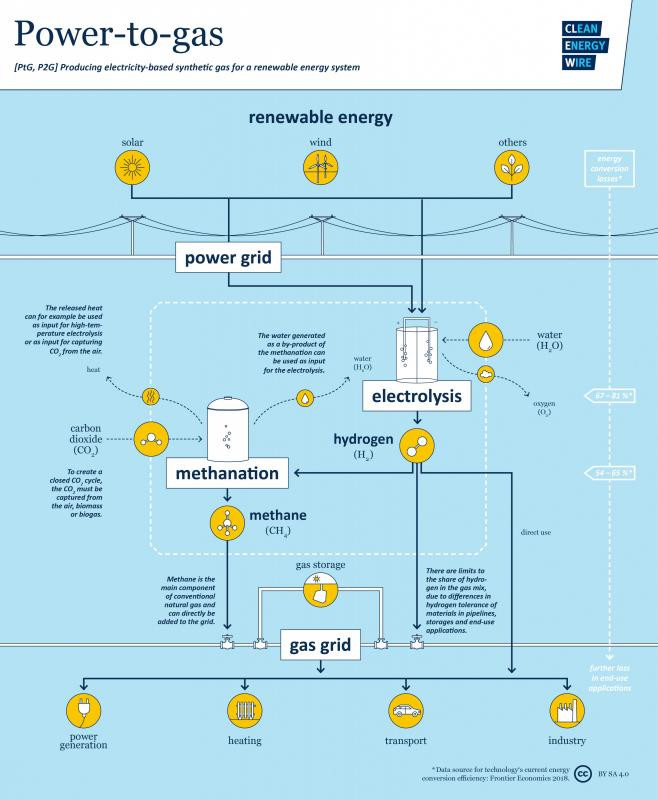Investors plan import terminal for synthetic methane from Middle East in Germany
Die Welt
Investors plan to build an import terminal for synthetic methane made in the Middle East on Germany's North Sea coast, reports newspaper Die Welt. The company Tree Energy Solutions (TES), which is backed by Belgian financial group Atlasinvest, initially plans to invest 2.5 billion euros in the project to import 25 terawatt-hours (TWh) of methane in 2027 that could be used to make half a million tonnes of hydrogen, which is roughly equivalent to Germany's entire 2030 target for domestic hydrogen production, according to the report. Olaf Lies, Minister for the Environment, Energy and Climate Protection in Lower Saxony, called the project "a gigantic opportunity, not only for the region, but for the energy transition as a whole." He added it will enable northern Germany to "become the gateway for renewable energy in all of Germany."
According to the plans, green hydrogen made with solar power will be transformed into synthetic methane, a substitute for natural gas, by adding CO2 in the Middle East for transportation. The CO2 will then be separated in Germany and transported back to the Middle east for re-use in methanisation, according to the plans. After yearly extensions, the terminal could supply 250 TWh of climate neutral gas in 2045, equivalent to around ten percent of Germany's entire final energy consumption, the article says.
Green hydrogen is viewed as a key part of the energy transition because it can replace fossil fuels in many applications that can't be electrified directly - for example in industry and aviation. But Germany will have to import the bulk of the green hydrogen it will need to reach climate neutrality, because it doesn't have the space for the renewables needed to make it.


